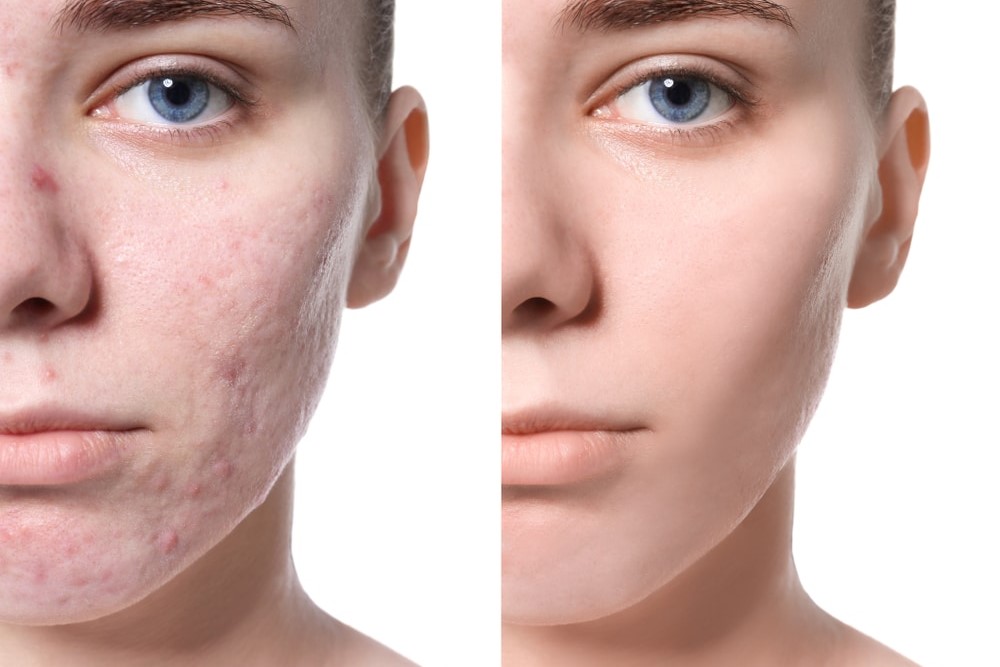
Acne scars: how effective is the laser?
Acne is an inflammation of the pilosebaceous follicle whose main manifestation is the appearance of so-called pimples or blackheads
It is often a temporary condition, but there are nevertheless many boys and girls who show signs of it, especially those who are in the habit of ‘squeezing’ lesions and/or have relied on non-specialist treatment.
Laser technologies are a valuable aid to improve this condition and make the skin look better again.
What is acne
Acne is a disease of the pilosebaceous follicle with a strong psychosocial impact.
It affects a large proportion of teenagers: around 70% of them suffered from this inflammation between the ages of 12 and 20.
Fortunately, severe forms account for only 15% of cases.
The inflammation that causes acne affects the sebaceous glands and can affect the epidermis at several levels.
In the superficial layers, the inflammation manifests itself with blackheads (comedones), small cysts (microcysts), and small skin reliefs that contain pus (pustules), or none at all (papules).
On the other hand, when it occurs and involves the deep layers with cysts and nodules with purulent content, the risk of scarring is very high.
Acne should not be underestimated: in some severe forms, acne can leave scars and permanent marks that can cause discomfort for the person, thus constituting a psychological problem as much as an aesthetic one.
To prevent it, medical therapy, together with the study of lifestyle and food intolerances, is necessary and fundamental in the initial stages to prevent the appearance of scars.
Not very effective, however, for improving them if they are already present. In this second situation, laser technology can help.
Co2 laser: an aid against acne scars
The ablative Co2 laser commonly used for the treatment of scarring resulting from trauma or surgical scars is also successfully used in acne scars.
A specific modality called ‘fractional ablative’ allows natural skin regeneration.
The spots (i.e. micro-columns of energy), which overcome the fibrous tissue and penetrate deep into the scar, send signals of regeneration, neo-vascularisation and collagen production to the dermis.
As a result, the skin tissue is induced to regenerate, reducing the depth of the scar and making the skin more compact and homogeneous.
There are contraindications for this treatment: The laser should not be performed during pregnancy and breastfeeding, on tanned skin or if you are planning to be exposed to the sun soon, or if you are taking certain types of medication.
Obviously the acne must be in a non-active phase, therefore perfectly controlled by medical treatment.
DYE laser
Another alternative for acne scars and post-acne spots, generally used for angiomas and dilated capillaries, is the DYE-laser.
This laser is particularly effective on highly vascularised scars as it uses a specific wavelength that affects the haemoglobin of dilated capillaries, which are responsible for their reddish colouring.
The DYE-laser reduces inflammation and reshapes the scar, making it flat and naturalising its colour.
How to treat acne before scars?
Acne scars can be avoided by starting the therapy prescribed by a dermatologist specialist at an early stage.
In the case of mild acne, specific cleansers and creams with antibiotic or keratolytic action, and/or topical retinoids may be particularly indicated.
If the acne is not too severe, cycles of specially formulated peelings may also be combined, and in more severe cases, systemic therapies may be used.
In any case, it is essential to consult a specialist for a thorough dermatological examination, avoiding do-it-yourself: remember that acne often depends on hormonal imbalances or, in girls, polycystic ovary, so a course of action in collaboration with a specialist in gynaecology can be suggested to tackle the problem in a multifactorial manner.
Read Also:
Emergency Live Even More…Live: Download The New Free App Of Your Newspaper For IOS And Android
Epidermolysis Bullosa And Skin Cancers: Diagnosis And Treatment
Skin: What To Do In Case Of Folliculitis?
Childhood Psoriasis: What It Is, What The Symptoms Are And How To Treat It
Dermatological Examination For Checking Moles: When To Do It
What Is A Tumour And How It Forms
Rare Diseases: New Hope For Erdheim-Chester Disease
How To Recognise And Treat Melanoma
Moles: Knowing Them To Recognise Melanoma
Skin Melanoma: Types, Symptoms, Diagnosis And The Latest Treatments
Melanoma: Prevention And Dermatological Examinations Are Essential Against Skin Cancer
Remedies And Causes Of Couperose On The Face


